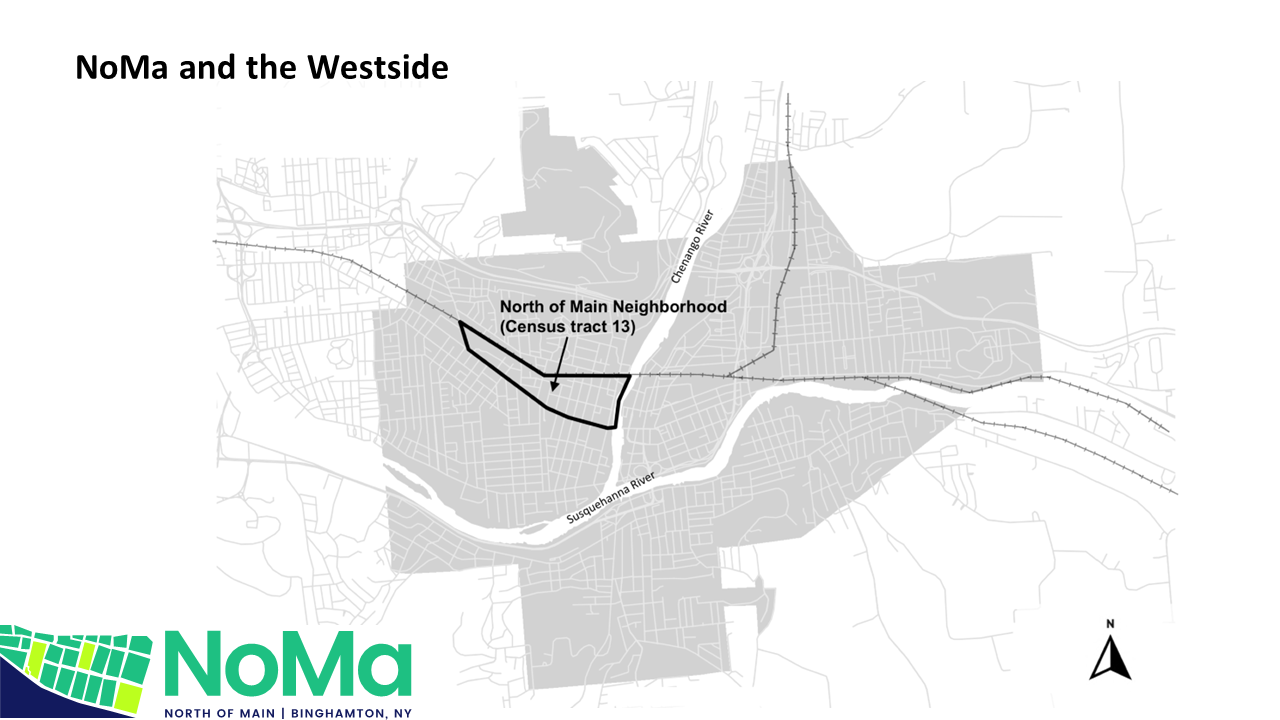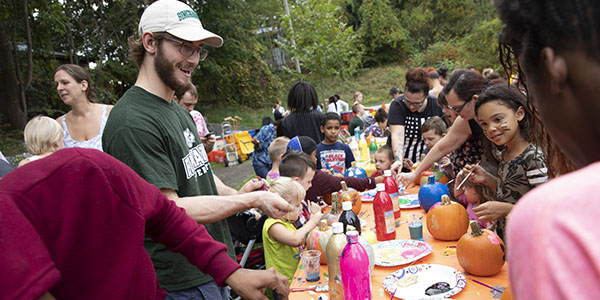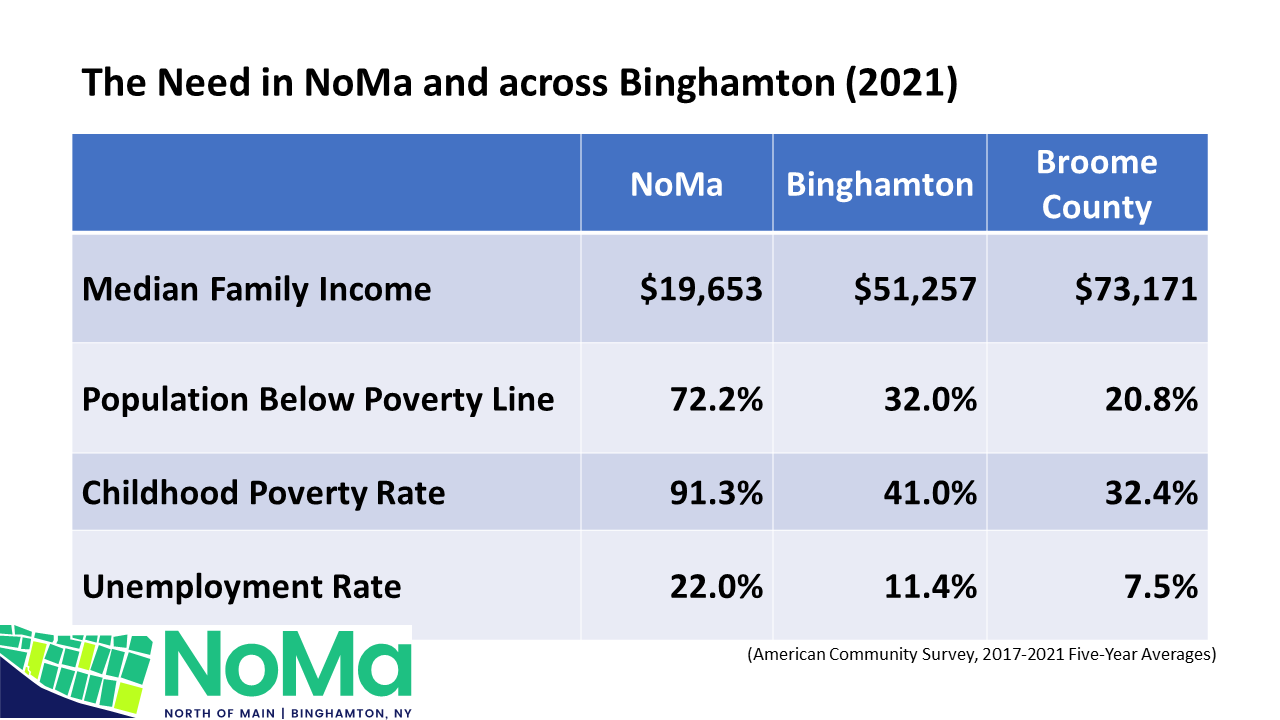Who We Are

The NoMa Community Center originated as a project of an organization by the name of Safe Streets that was founded in 1996. More about that here:

In 2018, the NoMa Community Center was officially born, housing its various programs and events at 85 Walnut Street, and then later moving to 30 Main Street within the First Congregational Church building on the corner of Front and Main Streets in the City of Binghamton, New York. Our immediate service area encompasses Census Tract 13, one of the region's most distressed, although we often serve people throughout Broome County, New York.
In 2023, a new 501c3 nonprofit, North Of Main Binghamton, Inc. was created to be the permanent official organization managing the NoMa Community Center.
What We Stand For
The NoMa Community Center is a destination where everyone is welcome, at no cost, to learn from each other, work together, and contribute to a healthy, vibrant community while growing personally. NoMa creates lasting partnerships that bridge the gaps among residents, businesses, and the local community by providing a hub of resources, events, and innovative programs at no cost. We provide a safe, non-judgemental, and welcoming environment for community members to be engaged, empowered, and active, while building social capital and networks.
NoMa excels at doing what we do for a number of reasons:
- Much of the work that gets done is through the generous donations of time and talent from our committed volunteer base, with many of our volunteers being from the population that the organization serves. This work is also not just a once-per-year occasion, but week in and week out, which not only speaks to our culture, but to a sense of pride and ownership among our clientele.
- Because we have a flat organizational structure, with most of our administrative work being handled by volunteer Board members, we are able to respond to shifts in demand for services and programming almost immediately. Our staff and Board members can often be found having informal conversations with clientele who offer suggestions, insight, and word-of-mouth information about what they're seeing in the community.
- Our driving forces are compassion, dignity, and empowerment. We believe that with enough effort, desire, and commitment, everyone is able to become capable of achieving whatever they set their mind to. We also understand that there are often systemic or environmental reasons why everybody is not always able to achieve whatever they invest their effort and commitment into.

